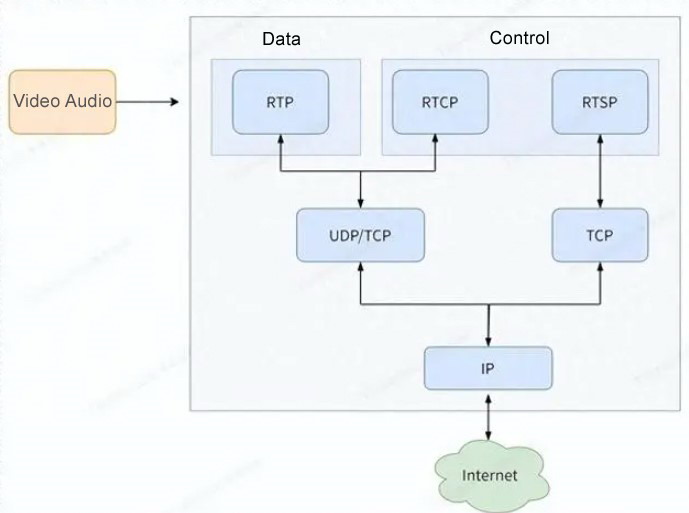RTSP vs ONVIF - What's the Difference?
In the fields of video surveillance and Internet of Things (IoT) devices, the Real Time Streaming Protocol (RTSP) and the Open Network Video Interface Forum (ONVIF) are two crucial protocols that play different roles in the transmission and control of video streams, complementing each other in practical applications. This article will explore the differences between the RTSP and ONVIF protocols and their applications in the EasyCVR platform.
1. Overview of the RTSP Protocol
RTSP is a protocol used to control the transmission of real-time multimedia streams over the internet. It is an application-layer protocol within the TCP/IP protocol suite. Developed jointly by RealNetworks, Netscape, and Columbia University, RTSP was published as an RFC 2326 standard in 1998.
RTSP is primarily responsible for the control and management of media streams, such as playback, pause, stop, and positioning. However, it does not directly transmit audio and video data; instead, it relies on protocols like the Real-time Transport Protocol (RTP) for the transmission of audio and video data. RTSP's syntax and operation are similar to HTTP 1.1, but it offers more flexibility and control capabilities in managing streaming media transmissions.

2. Overview of the ONVIF Protocol
ONVIF is a global open forum for network video interfaces, established in 2008 by Sony, Bosch, and other companies. It is dedicated to the standardization of IoT devices based on IP networks, providing a universal standard interface that allows network video products from different manufacturers to be compatible with each other.
The ONVIF specification covers the models, interfaces, data types, and data interaction patterns of network video, reusing some existing standards such as the WS series. The interfaces defined for device management and control in the ONVIF specification are provided in the form of Web Services, with the server and client data interaction using the SOAP protocol. The main goal of the ONVIF specification is to achieve interoperability between network video surveillance devices produced by different manufacturers, promoting the standardized development of network video surveillance equipment.
3. Differences Between RTSP and ONVIF
1) Functional:
RTSP is mainly used for the control and management of streaming media, such as playback and pause, without direct involvement in the transmission of audio and video data. In contrast, ONVIF is a more comprehensive standard aimed at achieving interoperability between network video devices from different manufacturers, including device discovery, description, control, and event notification.
2) Protocol Layers:
RTSP is an application-layer protocol in the TCP/IP protocol suite, located above RTP and RTCP, primarily responsible for the control and management of media streams. ONVIF, on the other hand, is an open standard protocol that provides Web Services interfaces for device management and control, as well as standard ways for audio and video stream transmission.
3) Data Transmission:
RTSP itself does not directly transmit audio and video data, which is achieved through protocols such as RTP. The audio and video streams in the ONVIF protocol are also transmitted via RTP/RTSP, but ONVIF focuses more on the interoperability and definition of standardized interfaces for devices.
4) Application Scenarios:
RTSP is mainly used in streaming media services, video surveillance, video conferencing, and live broadcasting, providing control and positioning functions for multimedia streams. ONVIF is primarily applied in the field of video surveillance and IoT devices, establishing a unified standard interface to achieve interoperability between devices from different manufacturers, reducing integration difficulties, and improving system scalability.
4. Complementarity of RTSP and ONVIF
In video surveillance systems, RTSP and ONVIF are often used in a complementary manner. ONVIF provides standards for interoperability between devices, enabling network video devices from different manufacturers to be compatible with each other. RTSP is used to control and manage the real-time multimedia stream transmission on these devices. This complementarity makes video surveillance systems more flexible and scalable, offering users a more convenient and efficient video surveillance experience.
In summary, RTSP and ONVIF each play a unique role in the field of video surveillance and multimedia stream transmission, with RTSP focusing on the control and management of streaming media, and ONVIF striving for interoperability between devices from different manufacturers. Their complementary use in video surveillance systems enhances the flexibility and scalability of the systems.





